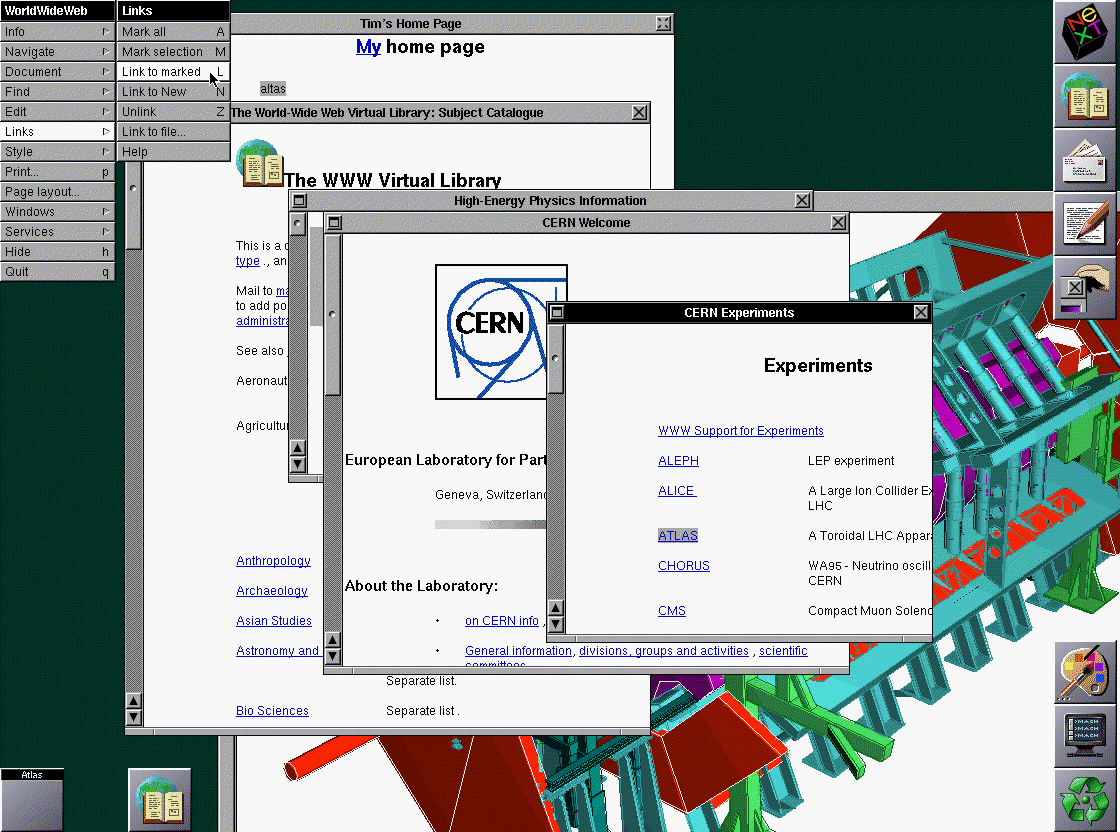CERN is starting a project to restore the world’s first website, and to preserve the digital assets that are associated with the birth of the Web. Twenty years ago, this day, CERN published a statement that made the World Wide Web (‘W3’, or simply ‘the Web’) technology available on a royalty-free basis. Now CERN says it wants the Web’s first address http://info.cern.ch to be a destination that reflects the story of the beginnings of the Web.
The first website at CERN, and in the world, was dedicated to the World Wide Web project itself. It was hosted on Tim Berners-Lee’s NeXT computer. The website described the basic features of the Web; how to access other people’s documents and how to set up a server. The NeXT machine – the original Web server – is still at CERN, but the world’s first website is no longer online at its original address.
By making the software required to run a web server freely available, along with a basic browser and a library of code, the Web was allowed to flourish, says CERN.
The technology behind WWW was invented in 1989 at CERN by Tim Berners-Lee, was originally conceived and developed to meet the demand for information sharing between physicists in universities and institutes around the world.
Other information retrieval systems that used the Internet – such as WAIS and Gopher – were available at the time, but the Web’s simplicity along with the fact that the technology was royalty free led to its rapid adoption and development.
CERN says it would like to restore the first URL – put back the files that were there at their earliest possible iterations. It will also inventory the first Web servers at CERN, and save/share assets from them. CERN also plans to sift through documentation and try to restore machine names and IP addresses to their original state.
[Image courtesy: Tim Berners-Lee/CERN]


